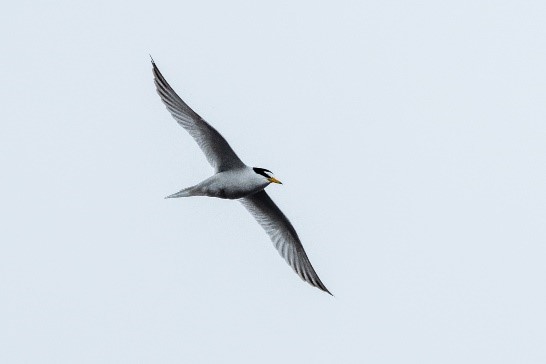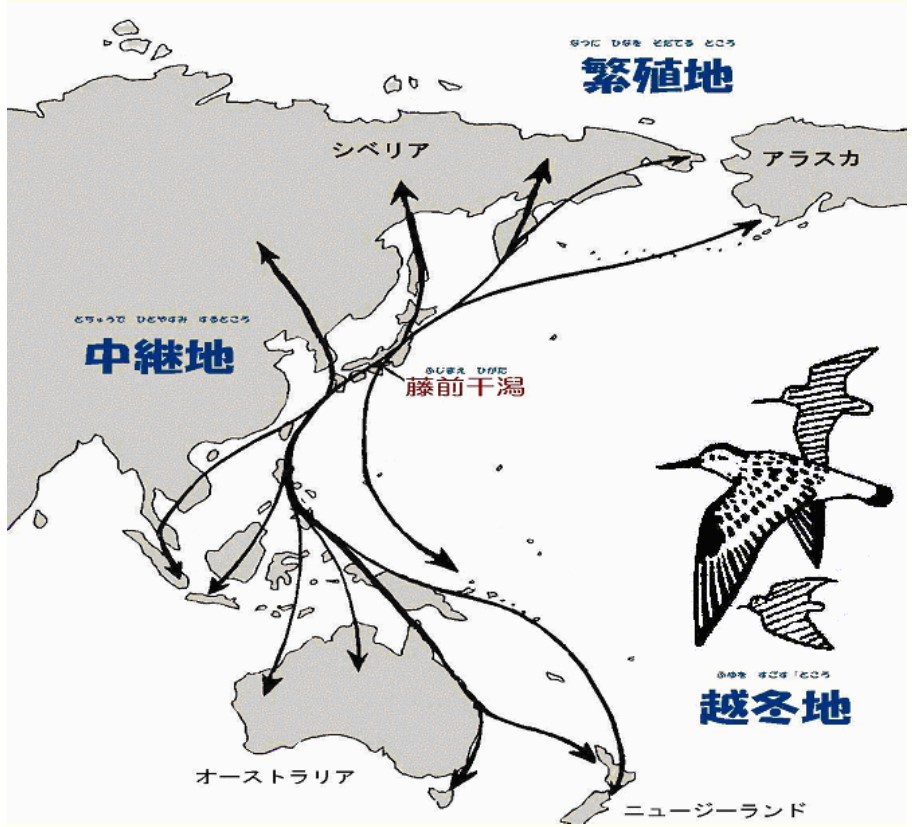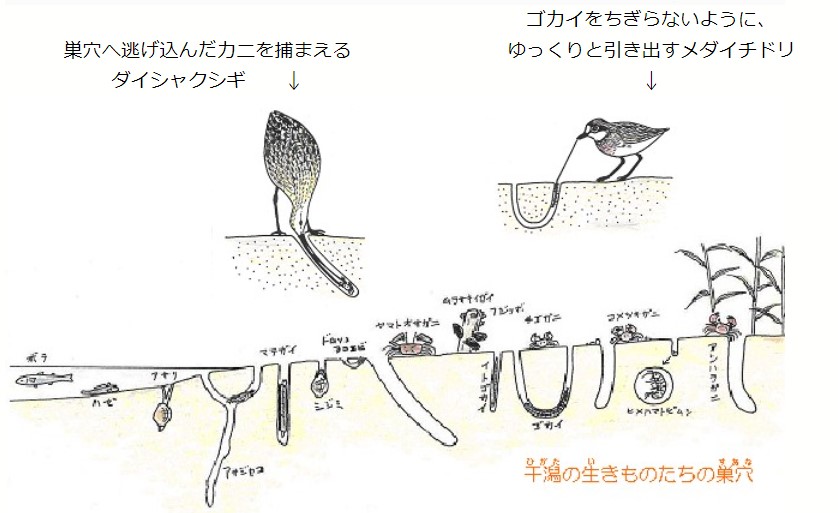Migratory Birds
Fujimae Tidal Flat is visited by many migratory birds throughout the year. In spring and fall, shorebirds, the representative migratory birds of the tidal flat, come to the tidal flat to rest their wings. Why do so many migratory birds come here?


One answer is the abundance of food. Many benthic organisms inhabit the tidal flats, and a variety of birds fly in to feed on them. In addition, there are various environments such as rivers, the sea, parks, and reed beds nearby with rich biodiversity.
Shorebird Migration
Shorebirds born in northern Siberia and Alaska migrate to Southeast Asia and the southern hemisphere before the cold weather sets in. In the spring, they return to their northern homelands to breed. Even birds with incredible flying ability need a stopover to rest and replenish their energy during their migratory journey, which is over 10,000 kilometers each way. Fujimae Tidal Flat, located halfway along their migration route, is one of the few remaining tidal flats in Ise Bay. Fujimae Tidal Flat is an oasis for migratory birds in a large city, where they can feel secure while resting during their journey.

Various Kinds of Beaks
Shorebird species that forage on tidal flats have distinctive beaks. Some have long, downward-curving beaks, others have upward-curving beaks, and still others have short beaks that are specialized for grabbing lugworms. They have evolved to feed on the wide variety of benthic organisms that inhabit the mudflats.


